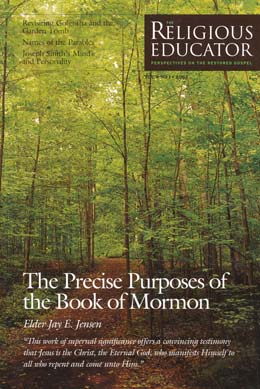Editor's Note
Elder Jay E. Jensen recalls reading books at the local library and often skipping the author’s prefaces. As he now confesses, he did not know what he was missing. Authors sometimes often divulge their main purposes right up front. This is true in the Book of Mormon as well, as Mormon, Moroni, Nephi, and Jacob precisely identified their intents in writing. Readers will want to get out their colored pencils to highlight the excellent passages identified in this timely article.
Millions of tourists have made the pilgrimage to Jerusalem to see the sites associated with the death and burial of Jesus Christ. The best candidates for Jesus’ burial place have traditionally been the Church of the Holy Sepulchre and the Garden Tomb. Jeffrey R. Chadwick explores the archeological, geological, and cultural evidence for these sites, arriving at some unexpected conclusions.
How does a person use the language of thee and thou in prayer? Furthermore, how can we as parents, teachers, or leaders teach others to use these reverential forms? John W. Welch, professor of law at BYU and editor-in-chief of BYU Studies, offers six simple guidelines to make this usage more natural in our prayers.
Many otherwise well-meaning denominations oppose the work of the Latter-day Saints because they misunderstand our doctrines and practices, believing, in some cases, that we do not reverence Jesus Christ as the Son of God. Unfortunately, we as Latter-day Saints sometimes narrowmindedly fail to appreciate others for their sincerity of worship. Robert L. Millet, former dean of Religious Education at BYU, offers a heartfelt plea for mutual respect in his article, “Outreach: Opening the Door or Giving Away the Store?”
Where did the names of the parables come from? Thomas A. Wayment, assistant professor of ancient scripture at BYU, considers the origin of such names as the parable of the prodigal son. He argues, convincingly, that the names by which they are known subtly influence our understanding of the main message. This thought-provoking article opens the door to some shades of meaning we may have overlooked.
These are a few of the treasures you will find in this issue of the Religious Educator.
Richard Neitzel Holzapfel, Editor-in-Chief
Ted D. Stoddard, Associate Editor
R. Devan Jensen, Executive Editor
